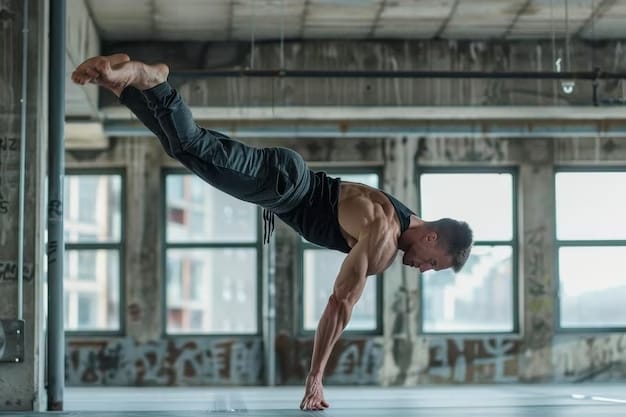- Deltoros Insider
- Posts
- Training for Agility: It’s Not Just for Athletes!
Training for Agility: It’s Not Just for Athletes!
3 Min Read
Agility training improves balance, coordination, and reaction time, making you more adaptable in both workouts and everyday activities.

In this newsletter, we’ll explore why agility is so important for everyone and share simple drills to help you get started.
Why Agility Training Matters for Everyone
You don’t need to be a professional athlete to benefit from agility training. Agility is all about your body’s ability to move quickly and change direction with ease. It’s the foundation of many movements, making it crucial for:
Balance and Stability: Agility helps you move efficiently while maintaining control, preventing falls and injuries.
Improved Coordination: Agility drills enhance your ability to sync your body’s movements, improving everything from your workouts to everyday tasks.
Faster Reaction Times: Agility training sharpens your reflexes, helping you react quickly to sudden changes in your environment.
"Agility isn’t just about speed—it’s about control, balance, and moving with purpose."
Training for agility makes daily life easier, whether it’s quickly avoiding obstacles, adjusting your balance, or picking up a fast-moving child!
Benefits of Agility Training for Non-Athletes
Here’s why agility training is beneficial for everyone—not just for those chasing athletic goals:
1. Prevents Injuries
Agility drills teach your body how to react quickly and regain balance, reducing the likelihood of tripping or falling. As you improve your coordination and balance, you become less prone to common injuries, especially as you age.
Key Takeaway: Agility helps you recover from missteps and avoid injuries in everyday situations.
2. Boosts Functional Fitness
Functional fitness refers to exercises that mimic everyday movements, and agility training is a key part of this. Whether it’s bending, twisting, or moving side to side, agility improves your ability to handle real-world physical tasks with ease.
Key Takeaway: Agility training strengthens your ability to perform everyday tasks, from carrying groceries to playing sports recreationally.
3. Enhances Cognitive Function
Agility training isn’t just physical—it’s also mental. It requires quick decision-making and sharp focus, which can improve brain function and coordination. This is especially beneficial for older adults looking to maintain cognitive health.
Key Takeaway: Agility training sharpens your mind and keeps you alert, enhancing mental and physical well-being.

Simple Agility Drills to Get Started
You don’t need special equipment or a ton of space to train for agility. Here are a few simple drills you can do anywhere to start improving your agility:
1. Cone or Marker Drills
If you have a few cones (or any small objects you can use as markers), you can create your own agility course. Set up the cones in different patterns, like a straight line, zigzag, or triangle, and move quickly between them.
How to Do It:
Set up cones in a zigzag pattern, about 3-5 feet apart.
Sprint to each cone, weaving in and out as fast as you can.
Focus on quick footwork and sharp turns.
Repeat for 3-4 sets, resting 30-60 seconds between rounds.
2. Ladder Drills
A speed ladder (or a makeshift one using tape) is an amazing tool for improving foot speed, coordination, and balance. If you don’t have a ladder, you can simply mark the ground with chalk or tape to create boxes.
How to Do It:
Perform quick foot movements like high knees, side shuffles, or in-and-out hops along the length of the ladder.
Focus on speed and accuracy, keeping your movements sharp and controlled.
Do each drill for 30 seconds, repeating 3-4 times.
3. Jumping and Hopping Drills
Jumping and hopping exercises improve lower body agility, balance, and coordination. These drills are especially helpful for strengthening your ankles, knees, and hips—key areas that support your ability to move quickly and change direction.
Example Drills:
Lateral Jumps: Jump side to side over a line, focusing on quick landings and balance.
Single-Leg Hops: Hop forward and backward on one foot, then switch to the other foot.
Box Jumps: Jump onto a sturdy surface (like a box or step), then step down and repeat.
4. Reaction Drills
Reaction drills are all about improving your response time. These drills train you to react quickly to an external stimulus, whether that’s a visual cue or a change in direction.
How to Do It:
Have a partner call out directions (left, right, forward, back), and move in that direction as fast as possible.
If you’re training alone, use a timer or app to randomly signal when to move.
Focus on quick starts and stops, staying light on your feet.

How to Incorporate Agility Training into Your Routine
You don’t need to overhaul your entire workout routine to include agility training. Here’s how to easily add agility drills to your fitness plan:
1. Warm Up with Agility Drills
Start your workout with a 5-10 minute agility warm-up. Doing a few cone drills or ladder exercises before lifting weights or doing cardio can help wake up your muscles and improve coordination.
2. Add Agility to Your Cardio Days
Instead of traditional running or cycling, switch things up with an agility circuit. Combine different drills like lateral jumps, ladder drills, and cone weaves for a fun and challenging cardio session that also builds coordination.
3. Use Agility as Active Recovery
On rest days, do light agility work like cone drills or reaction drills. These movements keep you active without the intensity of a full workout, improving your mobility and balance while giving your muscles a break.
Watch: Simple Agility Drills for All Fitness Levels
Looking for more fun and effective ways to improve your agility? Check out this video for easy agility drills that you can do at home or at the gym.
Frequently Asked Questions (FAQs)
1. What is agility training?
Agility training involves exercises that help you improve your ability to change direction quickly and maintain balance. It’s a key component of functional fitness that enhances both physical and mental agility.
2. Who should do agility training?
Everyone! Agility training isn’t just for athletes. It benefits people of all ages and fitness levels by improving coordination, balance, and reaction times.
3. How often should I train for agility?
Incorporating agility drills into your workout 2-3 times a week is a great way to see improvements without overloading your routine.
4. Do I need special equipment for agility training?
No. Many agility drills can be done with minimal equipment, such as cones, markers, or a ladder. You can even use household items like shoes or chalk to create agility courses.
5. Can agility training help with injury prevention?
Yes! Agility training improves your body’s ability to react quickly and maintain balance, which can help prevent falls, missteps, and other common injuries.
Conclusion
Agility training isn’t just for athletes—it’s for anyone who wants to move better, react faster, and reduce the risk of injury in everyday life. By incorporating fun and simple agility drills into your fitness routine, you can improve your balance, coordination, and reaction times, setting yourself up for better overall performance. Get started today with some cone drills, ladder exercises, or reaction-based movements, and watch how agility training benefits every aspect of your fitness journey!